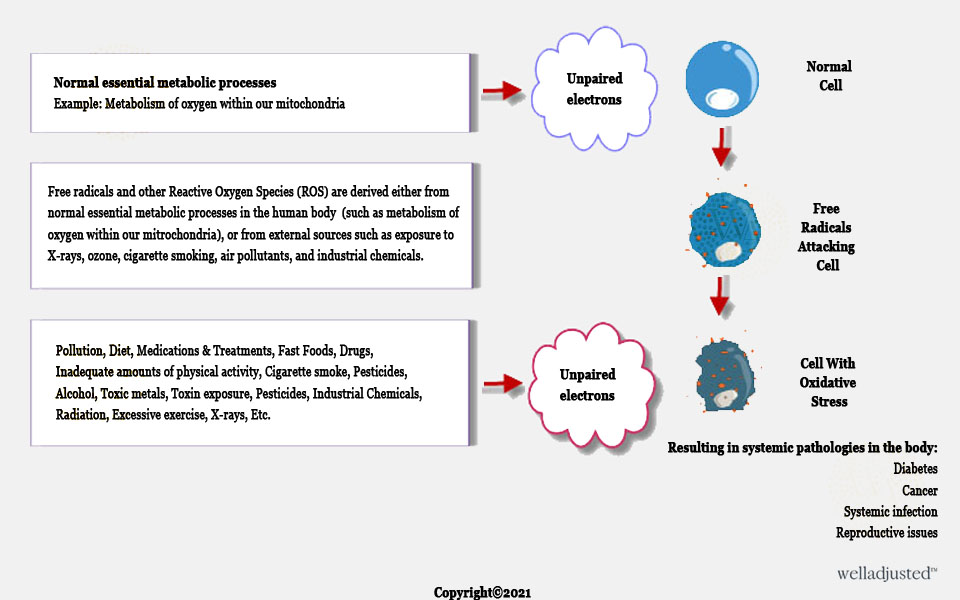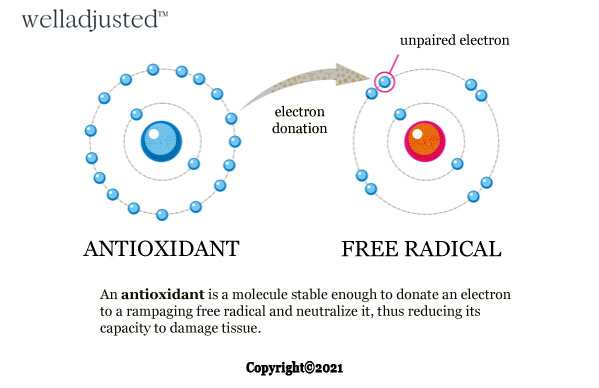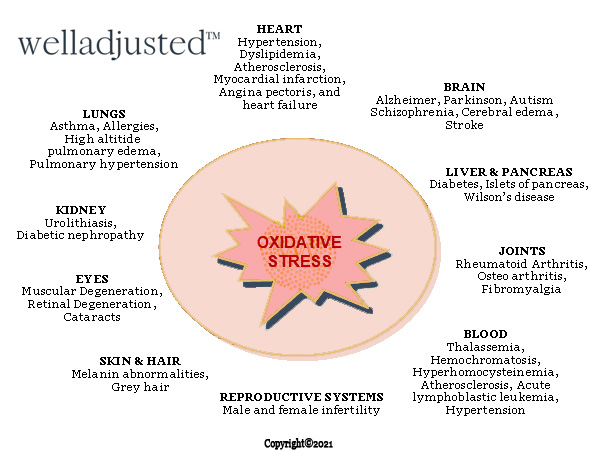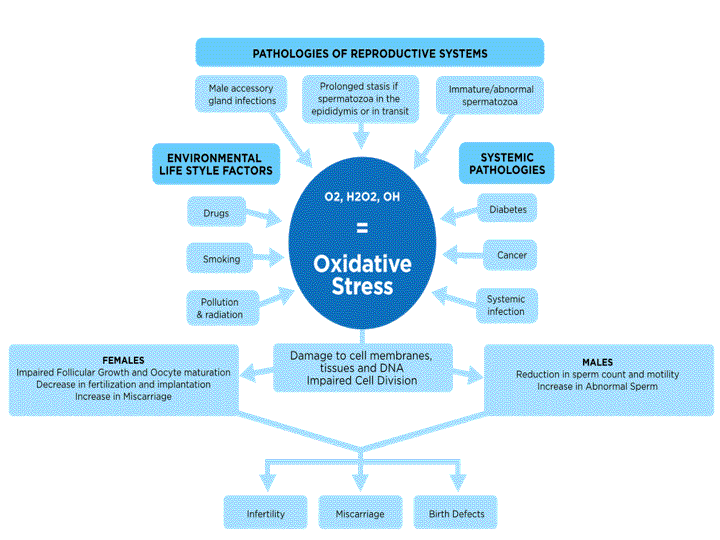 The term “oxidative stress” is frequently mentioned in the realm of science but it is not often clear what it means for us or our health. Research indicates that oxidative stress is an underlying cause of many health challenges and diseases including everything from base level inflammation to cardiovascular and kidney disease. Interestingly it also plays a role in miscarriage and complication in pregnancy. So understanding and preventing it is a smart strategy if we’re wanting greater health and wellbeing.
The term “oxidative stress” is frequently mentioned in the realm of science but it is not often clear what it means for us or our health. Research indicates that oxidative stress is an underlying cause of many health challenges and diseases including everything from base level inflammation to cardiovascular and kidney disease. Interestingly it also plays a role in miscarriage and complication in pregnancy. So understanding and preventing it is a smart strategy if we’re wanting greater health and wellbeing.
Let’s explore what oxidative stress is, what signs to look out for, and some simple steps we can take to prevent it.
The Process of Oxidation.
At its most basic level, oxidation is the loss of electrons. When an atom or compound is oxidized, its properties change. For example, unoxidized iron is a strong, structurally sound metal, while oxidized iron is a brittle, reddish powder.
 This process occurs constantly in our environment and naturally within our bodies. Free radicals and other Reactive Oxygen Species (ROS) are derived either from normal essential metabolic processes in the human body (such as the metabolism of oxygen within our mitochondria), or from external sources such as exposure to X-rays, ozone, cigarette smoking, air pollutants, and industrial chemicals.1
This process occurs constantly in our environment and naturally within our bodies. Free radicals and other Reactive Oxygen Species (ROS) are derived either from normal essential metabolic processes in the human body (such as the metabolism of oxygen within our mitochondria), or from external sources such as exposure to X-rays, ozone, cigarette smoking, air pollutants, and industrial chemicals.1
These compounds possess one or more unpaired electrons and as such, are rendered highly reactive, often conducting unwanted oxidation reactions in a variety of cell and tissue sites. This would be just like the phrase, a bull in a china shop, it’s a disaster waiting to happen.
 What are Antioxidants?
What are Antioxidants?
The human body is equipped with a variety of antioxidants that serve to counterbalance the effect of oxidants (free radicals and other ROS). An antioxidant is a molecule stable enough to donate an electron to a rampaging free radical and neutralize it, thus reducing its capacity to damage tissue.
These antioxidants delay or inhibit cellular damage mainly through their free radical scavenging property.1 Reactive oxygen species otherwise participate in oxidation reactions that cause damage to cellular components such as DNA, proteins, carbohydrates, and lipids. This can negatively impact things such as the permeability of cell walls, gene expression, and enzyme function.
It is noted, however, that free radicals and ROS work to our benefit to control certain cellular functions like redox signaling, gene expression as well as helping to defend against pathogens 2. Thus, the role of antioxidant systems is not to eliminate oxidants (ROS) completely, but instead maintain them at an optimum level.
 What is Oxidative Stress then exactly?
What is Oxidative Stress then exactly?
Therefore, oxidative stress is the term used to describe when the critical balance between free radical generation and antioxidant defenses is tipped, with an excess of free radicles resulting in oxidative damage.1
Various studies and theories have connected oxidative stress (due to the impact of free radicals) to the following health challenges:4
- central nervous system diseases, such as Alzheimer’s and other dementias
- cardiovascular disease due to clogged arteries
- autoimmune and inflammatory disorders, such as rheumatoid arthritis and cancer
- cataracts and age-related vision decline
- age-related changes in appearance, such as loss of skin elasticity, wrinkles, graying hair, hair loss, and changes in hair texture
- diabetes, genetic degenerative diseases, such as Huntington’s disease or Parkinson’s
- pregnancy complications.3
Inflammation and Oxidative Stress.
Free radical damage is especially troublesome because it goes hand-in-hand with inflammation. Oxidative stress and inflammation actually have a mutually reinforcing relationship: free radicals can cause chronic inflammation, and the presence of inflammation can cause the release of more free radicals. This process accelerates cellular damage, reduces our longevity, and compromises our overall well-being.5
The free radical theory of aging is relatively new, but numerous studies now support it. Studies on rats, for example, showed significant increases in free radicals as the rats aged. These changes matched up with age-related declines in health. Over time, researchers have tweaked the free radical theory of aging to focus on the mitochondria. Mitochondria are tiny organelles in cells that process nutrients to power the cell. Research on rats suggests that free radicals produced in the mitochondria damage the substances that the cell needs to work properly. This damage causes mutations that produce more free radicals, thus accelerating the process of damage to the cell.4 For more information on Mitochondrial health see our new article…
IN SUMMARY:
Oxidative stress happens when the number of free radicals exceeds the number of antioxidants. That’s when oxidation damages our cells, proteins and our DNA (genes).
Oxidation happens under a number of circumstances including:
- When our cells use glucose to make energy
- When the immune system is fighting off bacteria and creating inflammation
- When our bodies detoxify pollutants, pesticides, radiation, cigarette smoke and drug use
- During times of environmental stress
In fact, there are millions of processes taking place in our bodies at any one moment that can result in oxidation.
How Do You Know If You Have Oxidative Stress?
Here are a few signs to look out for:
- Fatigue
- Memory loss and/or brain fog
- Muscle and/or joint pain
- Wrinkles and grey hair
- Decreased eyesight
- Headaches and sensitivity to noise
- Susceptibility to infections
Do these signs sound a bit vague? Yes, potentially they do however through understanding the process of oxidative stress we can appreciate how cell damage then progressively compromises natural order and physiological processes in the body.
So, what can cellular damage do?
This diagram that I have adapted from A. Agarwal and his paper, The Role of Antioxidant Therapy In The Treatment Of Male Infertility, gives amazing clarity as to how oxidative stress can cause havoc in the body.8
Here we see that as an example oxidative stress is able to:
- Damage the sperm’s cell membrane and sperm DNA, leading to single or double-strand breaks referred to as DNA fragmentation.
If DNA fragmentation is left unrepaired it can render the sperm malformed, immobile, or both. Defective sperm, unfortunately, can also cause miscarriage.
- For women, oxidative stress may impair follicles and ovaries, decrease fertilisation and the likelihood of implantation, and increases the chance of miscarriage.
 A common misconception is often made that if a woman can become pregnant but miscarries, it’s not a male reproductive issue at the cause. It must be a female issue. This may not be the case. Often couples assume this, when in fact impaired cell division caused by male oxidative stress can cause a miscarriage after implantation has occurred. Oxidative stress is known to play a role in placental dysfunction and pre-eclampsia and other pathologies in pregnancy.9
A common misconception is often made that if a woman can become pregnant but miscarries, it’s not a male reproductive issue at the cause. It must be a female issue. This may not be the case. Often couples assume this, when in fact impaired cell division caused by male oxidative stress can cause a miscarriage after implantation has occurred. Oxidative stress is known to play a role in placental dysfunction and pre-eclampsia and other pathologies in pregnancy.9
For more information on oxidative stress please see our follow up blog on:
How to Reduce Oxidative Stress.
For other related blogs please read:
Genes
Should I be Freaking Out About my Genes?
Epigenetics End Concerns About Genetic Predispositions
Methylation
How Can I Improve Methylation?
Are Your Methylation Processes Bang On, OR Are They Off the Rails?
Glutathione
How to Boost Your Glutathione?
Wondering Why So Many Kids and Adults Have Health Problems?
References:
1. Lobo V, Patil A, Phatak A, Chandra N. Free radicals, antioxidants and functional foods: Impact on human health. Pharmacogn Rev. 2010;4(8):118-126. doi:10.4103/0973-7847.70902
2. Ziad Moussa, Zaher M.A. Judeh and Saleh A. Ahmed (July 16th 2019). Nonenzymatic Exogenous and Endogenous Antioxidants, Free Radical Medicine and Biology, Kusal Das, Swastika Das, Mallanagouda Shivanagouda Biradar, Varaprasad Bobbarala and S. Subba Tata, IntechOpen, DOI: 10.5772/intechopen.87778. Available from: https://www.intechopen.com/books/free-radical-medicine-and-biology/nonenzymatic-exogenous-and-endogenous-antioxidants
3. Burton GJ, Jauniaux E. Oxidative stress. Best Pract Res Clin Obstet Gynaecol. 2011;25(3):287-299. doi:10.1016/j.bpobgyn.2010.10.016
4. https://www.medicalnewstoday.com/articles/318652
5. https://scilifebiosciences.com/blog/oxidation-antioxidants-the-science-behind-a-primary-mechanism-of-aging
6. Whaley-Connell A, Pavey BS, Chaudhary K, Saab G, Sowers JR. Renin-angiotensin-aldosterone system intervention in the cardiometabolic syndrome and cardio-renal protection. Ther Adv Cardiovasc Dis. 2007 Oct;1(1):27-35.
7. Zhuang S, Yan Y, Daubert RA, Han J, Schnellmann RG. ERK promotes hydrogen peroxide-induced apoptosis through caspase-3 activation and inhibition of Akt in renal epithelial cells. Am J Physiol Renal Physiol. 2007 Jan;292(1):F440-7.
8. Agarwal et al. The role of antioxidant therapy in the treatment of male infertility. Hum Fertil (Camb). 2010 Dec;13(4):217-25
9. Aouache R, Biquard L, Vaiman D, Miralles F. Oxidative Stress in Preeclampsia and Placental Diseases. Int J Mol Sci. 2018;19(5):1496. Published 2018 May 17.






